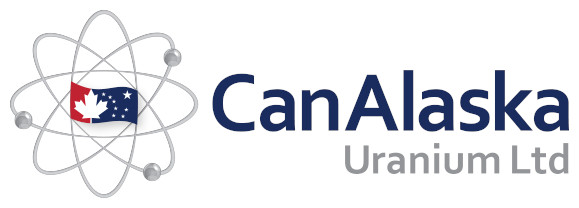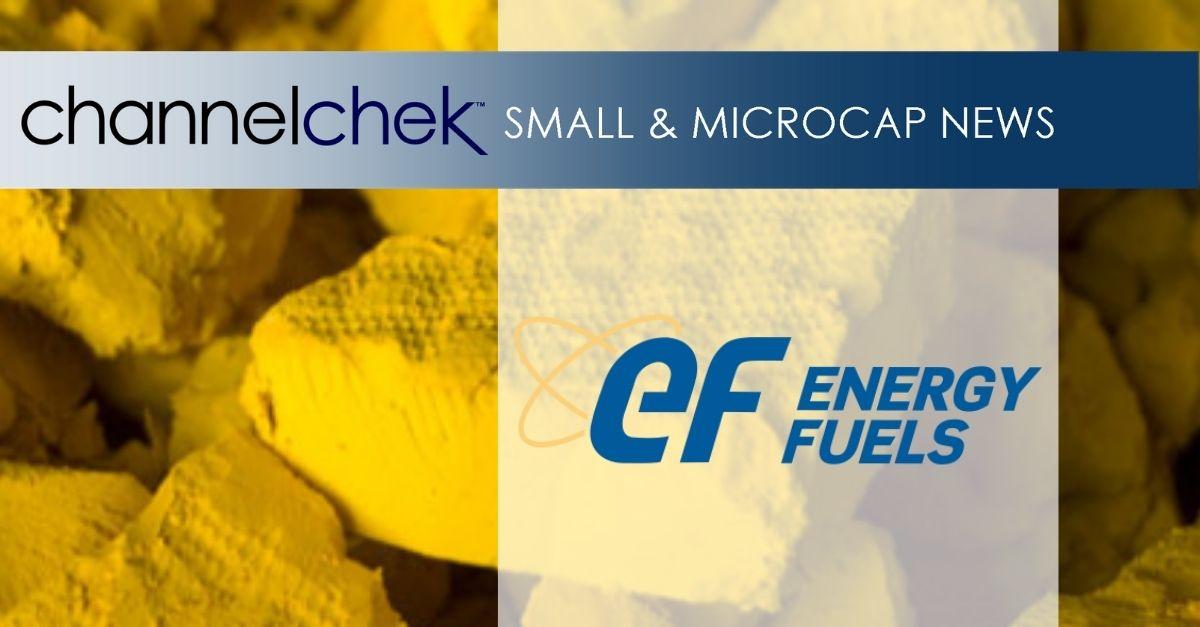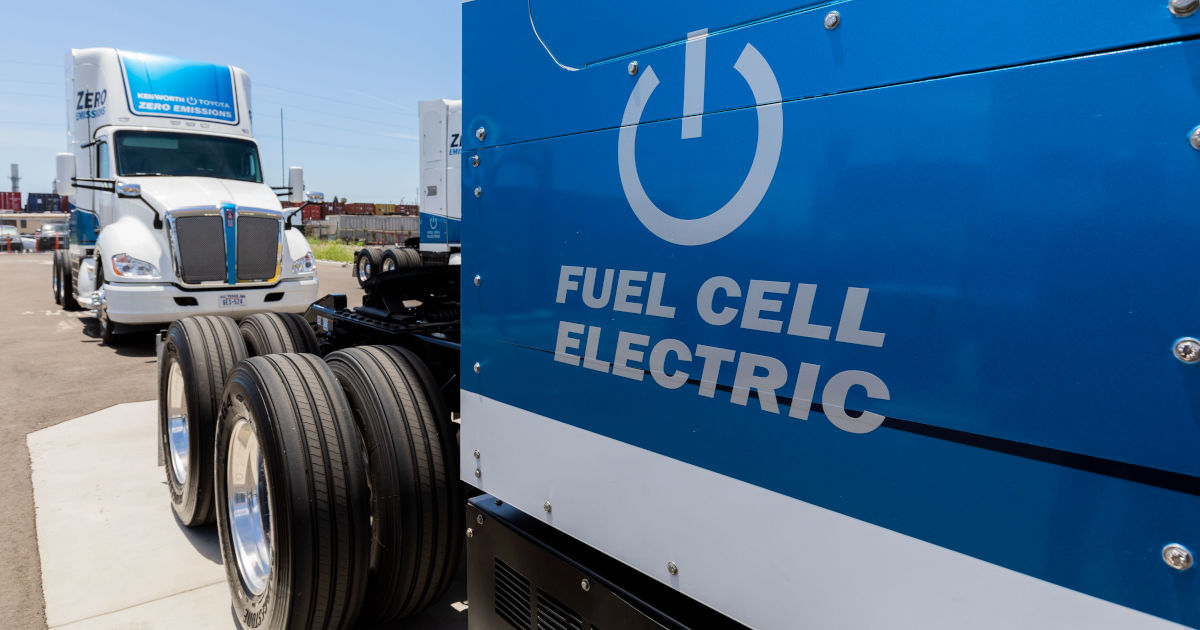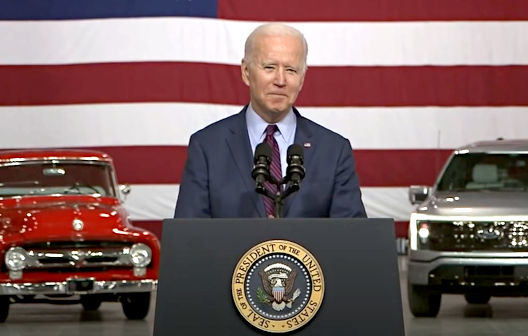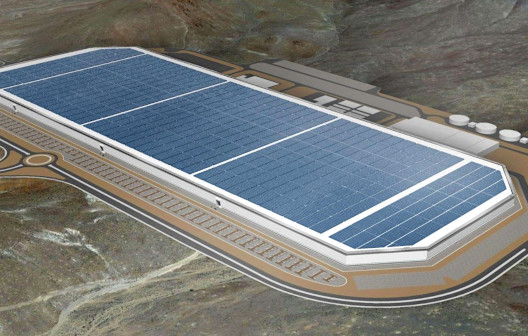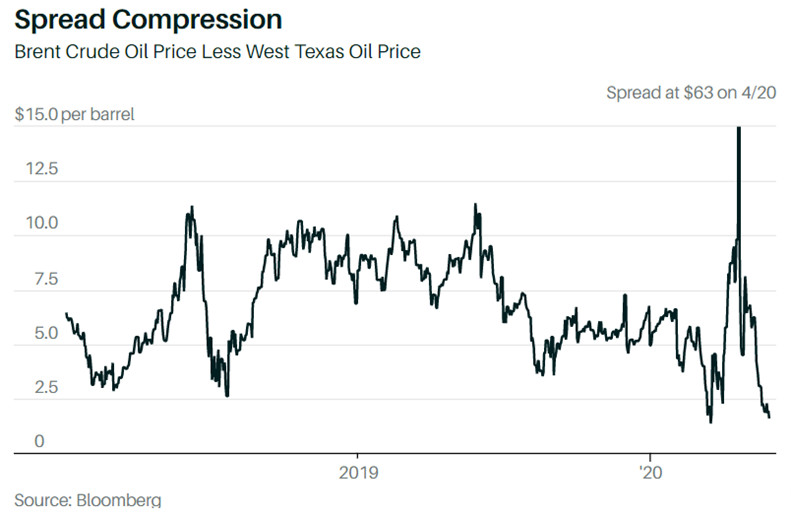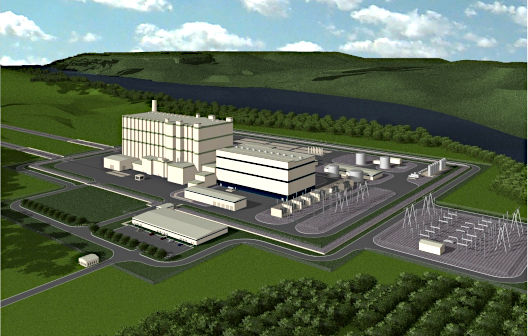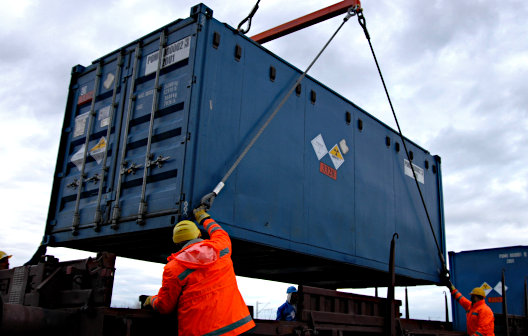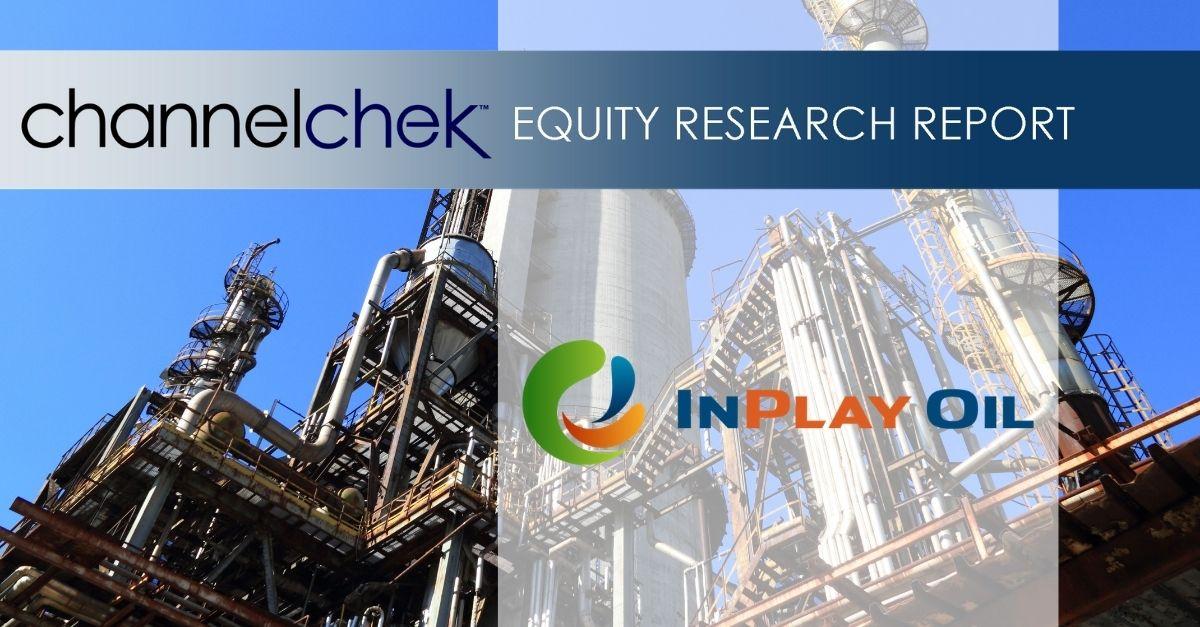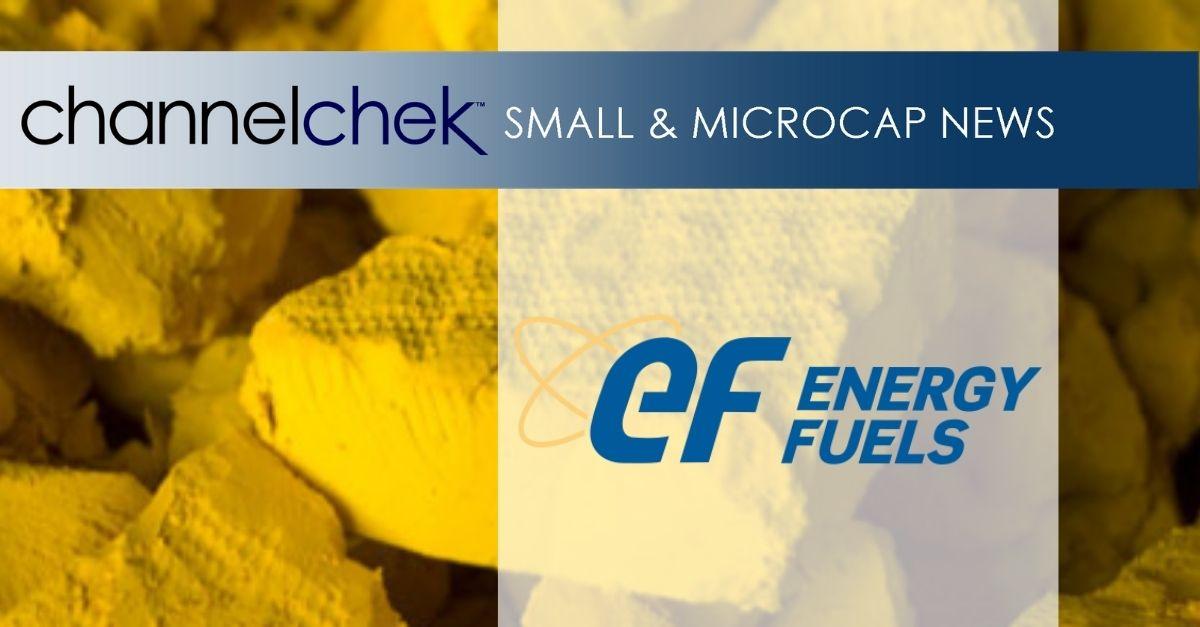Transaction Highlights:
- New Entrant into the U.S. Uranium Sector – The acquisition and alliance is expected to establish CUR as a new player in the U.S. uranium sector. The U.S. is currently the largest generator of nuclear power in the world and, by extension, the largest consumer of uranium. At the same time, domestic production of uranium is almost non-existent due to low prices and anti-competitive practices by foreign suppliers. In late 2020, the U.S. government approved the proposed establishment of a U.S. national strategic uranium reserve. Uranium mined by CUR, at one of the acquired Projects, and processed into natural uranium concentrates at Energy Fuels’ White Mesa Mill located near Blanding, Utah, is expected to qualify for the proposed reserve.
- Unlocks the Value of Past Producing Mines, Permitted and Well-Positioned for Rapid Restart – The portfolio of Projects being acquired pursuant to the Transaction includes, among other assets, the following three permitted, past-producing mines in Utah, which are expected to be the immediate focus of CUR:
- Tony M Mine – Located in the Henry Mountains area of southeastern Utah, the Project is a large-scale, fully-developed and permitted underground mine that operated most recently in 2008.
- Daneros Mine – Located in the White Canyon District, the Project is a fully-developed and permitted underground mine that was most recently in production in 2013.
- Rim Mine – Located in the East Canyon portion of the Uravan Mineral Belt, the Project is a fully-developed and permitted underground mine that was most recently in production in 2009.
- Strategic Alliance with Energy Fuels, the Leading U.S. Uranium Producer – With the toll-milling agreement for production from the Projects to be executed on closing of the Transaction, CUR will become the only current U.S. uranium developer (other than Energy Fuels) with guaranteed access to Energy Fuels’ White Mesa Mill, which is the only permitted and operating conventional uranium mill in the U.S. Further, the operating agreements will allow the Projects to continue to be managed by the experienced team at Energy Fuels, ensuring a smooth transition.
- Compelling Acquisition Terms and Structure – The consideration payable to Energy Fuels for the acquisition of the Projects and for securing the toll-milling and operating agreements includes US$2 million payable at closing, Cdn$6 million of deferred cash payable over time, Cdn$5 million of deferred cash payable on commencement of commercial production, and such number of CUR shares that results in Energy Fuels holding 19.9% of the outstanding CUR common shares immediately after closing. CUR will also pay Energy Fuels a management fee, along with a toll milling fee for ore produced at the Projects in the future.
- Board of Directors Strengthened with Addition of Mark Chalmers. On closing, it is expected that Mark Chalmers, President and CEO of Energy Fuels, will join the CUR Board of Directors. Mr. Chalmers, a mining engineer by training, is a recognized leader in the uranium sector, both in the US and globally, and will bring decades of experience in uranium project development and mining to CUR.
Philip Williams, President and CEO of CUR commented, “We could not be more excited about today’s announcement. Our strategy has been to acquire uranium projects around the world, create critical mass, and target the acquisition of larger, more advanced projects. While the recently announced acquisition of the high-grade Matoush Project in Quebec was a big step forward for CUR, today’s acquisition and alliance with Energy Fuels represents a giant leap. In one transaction, we are entering the important U.S. uranium sector by acquiring past producing mines which are permitted and well positioned for a rapid restart when market conditions are right. And, with the toll-milling agreement for the Projects, we are now the only company other than Energy Fuels to have secured guaranteed access to the White Mesa Mill. This is a truly unique position for CUR. Add to that the operating agreements, which allow us to benefit from the decades of experience that the Energy Fuels team has with these projects, and the addition of Mark Chalmers to the board, and the benefits to CUR and its shareholders are substantial.”
Mark Chalmers commented, “This transaction has all the hallmarks of a true win-win for both parties. Energy Fuels currently holds the largest and highest quality portfolio of uranium production, development, and exploration projects in the U.S. The assets we are selling to CUR are proven U.S. uranium mines, and in fact production from these mines since 2006 has accounted for over 1,050,000 lbs of US uranium production, which would rank those mines as fifth among all current uranium producers in the US over those years. However, because Energy Fuels is focusing its attention on its core projects – the Nichols Ranch and Alta Mesa ISR properties and the Pinyon Plain, La Sal and other conventional properties, we do not believe markets have properly valued the Projects within our expansive portfolio of exceptional assets. We believe that, in order to realize the full value of our expansive portfolio, certain assets, such as the Projects, can be repositioned to the benefit of Energy Fuels and its shareholders, provided we find the right vehicle to unlock the value of these assets. In this transaction, we believe we have found that vehicle in CUR. Having known and worked with the team behind CUR for almost 15 years, I have watched keenly as they have gained market support for their consolidation strategy. This is why we have structured the transaction to provide Energy Fuels with significant exposure to the future share price performance of CUR through a 19.9% equity interest and speaks to our belief in and our commitment to these assets. My joining the CUR board, as well as Energy Fuels’ entering into the toll-milling and operating agreements for the Projects, should also be strong signals as to how important we view our alliance with CUR for these assets.”
Terms of the Asset Purchase Agreement
Pursuant to the Purchase Agreement, CUR will acquire from the EF Parties 100% of the Tony M, Daneros and Rim mines in Utah, as well as the Sage Plain property and eight DOE Leases in Colorado, for the following consideration:
- the payment of US$2.0 million in cash, payable on closing of the Transaction;
- the issuance of that number of CUR shares that results in Energy Fuels holding 19.9% of the outstanding CUR common shares immediately after closing of the Transaction;
- the payment of Cdn$3.0 million in cash on or before the 18-month anniversary of closing of the Transaction;
- the payment of an additional Cdn$3.0 million in cash on or before the 36-month anniversary of closing of the Transaction; and
- the payment of up to Cdn$5.0 million in contingent cash payments tied to achieving commercial production at the Tony M Mine, the Daneros Mine and the Rim Mine.
The Purchase Agreement includes provision for the return of the Projects to Energy Fuels in the event that CUR does not make the deferred cash payments as described above.
Closing of the Transaction is subject to satisfaction of certain closing conditions including, among other things, CUR receiving approval of the TSX Venture Exchange. All securities issued in connection with the Agreement are subject to a hold period expiring four months and one day from the date of issuance.
The Strategic Alliance
The strategic alliance between CUR and Energy Fuels for the Projects involves three key components:
- The Toll-Milling Agreement – Under this agreement, the EF Parties will toll-mill ore mined from the Projects at the White Mesa Mill, subject to payment by CUR of a toll-milling fee and certain other terms and conditions.
- The Operating Agreements – Under these agreements, the EF Parties will provide ongoing services for a fee to maintain the Projects in good standing, as well as additional services as agreed to by the parties.
- The Investor Rights Agreement – Under this agreement, for so long as Energy Fuels’ equity ownership in CUR remains at or above 10%, it will be entitled to equity participation rights to maintain its pro rata equity ownership in CUR and to appoint one nominee to the CUR Board of Directors. Energy Fuels has also agreed to certain resale restrictions on the shares of CUR it will hold and to provide voting support in certain circumstances.
Strengthening the Board of Directors
In accordance with the terms of the investor rights agreement to be entered into on closing of the Transaction, for so long as Energy Fuels maintains its equity ownership in the common shares of CUR at or above 10%, Energy Fuels is entitled to nominate one member to the CUR Board of Directors. On closing of the Transaction, it is expected that Energy Fuels will nominate Mark Chalmers, its current President and CEO, to the CUR Board of Directors. Mr. Chalmers has spent nearly his entire career in the uranium industry, taking the role of President and Chief Executive Officer of Energy Fuels on February 1, 2018. He returned to Energy on July 1, 2016 after 15 years working in the uranium sector in the Southern Hemisphere. From 2011 to 2015, Mr. Chalmers served as Executive General Manager of Production for Paladin Energy Ltd., a uranium producer with assets in Australia and Africa, including the Langer Heinrich and Kayelekera mines where, as head of operations, he oversaw sustained, significant increases in production while reducing operating costs. He also possesses extensive experience in ISR uranium production, including management of the Beverley Uranium Mine owned by General Atomics (Australia), and the Highland Mine owned by Cameco Corporation (USA). Mr. Chalmers has also consulted to several of the largest players in the uranium supply sector, including BHP Billiton, Rio Tinto, and Marubeni and, until recently, served as the Chair of the Australian Uranium Council, a position he held for 10 years. Mr. Chalmers is a registered professional engineer and holds a Bachelor of Science in Mining Engineering from the University of Arizona.
The Tony M Mine
The Tony M Mine is located in eastern Garfield County, Utah approximately five miles north of Ticaboo, Utah and approximately 127 road miles west of the White Mesa Mill. The deposit currently forms part of the Henry Mountains Complex.
Uranium mineralization on the property is hosted by favorable sandstone of the Salt Wash Member of the Morrison Formation, a principal uranium host in the US. Mineralization primarily consists of coffinite with minor uraninite, which usually occurs in close association with vanadium mineralization.
The Tony M Mine was originally developed by Plateau Resources Ltd. (“Plateau“) in the late 1970s to provide a nuclear fuel supply to its parent company Consumers Power Company (Consumers) of Michigan. In 1984, operations were suspended.
In February 2007, Denison Mines Corp. (“Denison“) acquired the Tony M property and, following rehabilitation work and re-establishment of surface facilities in 2006, received the necessary operational permits for the reopening of the Tony M underground workings, after which it commenced mining activities in September 2007. Denison operated the mine from September 2007 to November 2008. The following table sets forth the historic production from the Tony M Mine by Plateau and Denison:
|
Tony M Historic Production
|
|
Company
|
Tons (000s)
|
%U3O8
|
Lbs U3O8 (000s)
|
|
Plateau (1979-1984)
|
237
|
0.12
|
569
|
|
Denison (2007-2008)
|
162
|
0.13
|
422
|
|
Totals
|
399
|
0.12
|
991
|
In 2008, the Tony M Mine was placed on care and maintenance, and in June 2012, Energy Fuels acquired all of Denison’s uranium properties in the United States, including the Henry Mountains Complex. Since acquiring the Henry Mountain Complex, Energy Fuels has not carried out any further exploration work nor conducted any further mine development at the Tony M Mine. The Tony M Mine is currently being maintained in a ready state with all required permits in place to resume operations as market conditions warrant.
In June 2012, Roscoe Postle Associates Inc. prepared a technical report entitled “Technical Report on the Henry Mountains Complex Uranium Property, Utah U.S.A.” for Energy Fuels, which detailed the mineral resource estimate set out in the table below for the Tony M Mine. This mineral resource estimate is considered to be a “historical estimate” for CUR as defined under NI 43-101 – Standards of Disclosure for Mineral Projects (“NI 43-101“). A Qualified Person has not done sufficient work to classify the historical estimate as a current Mineral Resource, and CUR is not treating the historical estimate as a current Mineral Resource. See below under “Technical Disclosure and Qualified Person”.
|
Tony M Mine Historical Mineral Resource Estimate
|
|
Category
|
Tons (000s)
|
%U3O8
|
Lbs U3O8 (000s)
|
|
Indicated
|
1,690
|
0.24
|
8,130
|
|
Inferred
|
860
|
0.16
|
2,750
|
|
Notes:
|
|
|
1.
|
Mineral Resources were classified in accordance with CIM Definition Standards.
|
|
2.
|
Cut-off grade is 0.10% eU3O8 over a minimum thickness of 2 ft. for the Tony M-Southwest deposit.
|
|
3.
|
Mineral Resources have not been demonstrated to be economically viable.
|
|
4.
|
All mine production by Plateau and Denison has been deducted.
|
Following closing of the Transaction, CUR intends to undertake a program to verify the historical estimate as a current mineral resource estimate and complete a preliminary economic assessment to quantify the cost, development activity and time required to bring the mine back into production.
The Daneros Mine
The Daneros Mine is located on the Colorado Plateau in San Juan County, Utah approximately 70 miles west of the White Mesa Mill. The property is in the Red Canyon portion of the White Canyon Mining District.
Major uranium deposits in the White Canyon District occur at or near the base of the Upper Triassic Chinle Formation, in fluvial channel deposits of the Shinarump Member, the basal member of the Chinle Formation. Uranium mineralization appears to be related to low-energy depositional environments in that uranium is localized in fluvial sandstones that lie beneath organic-rich lacustrine-marsh mudstone and carbonaceous delta-front sediments.
The Daneros Mine operated from 2009 until October 2012 when the mine was placed on standby. Initially, White Canyon Uranium Limited (“White Canyon“) brought the mine into production by sending millfeed to the White Mesa Mill under a toll-milling agreement with Denison. Daneros was White Canyon’s principal asset. Denison acquired White Canyon in June 2011 for AU$57 Million in cash and continued to operate the mine until its U.S. operations were acquired by Energy Fuels in June 2012. The following table sets forth the historic production from the Daneros Mine:
|
Daneros Historic Production
|
|
Project
|
Tons (000s)
|
%U3O8
|
Lbs U3O8 (000s)
|
|
Daneros (2010-2013)
|
120
|
0.26
|
628
|
|
Other Mines1
|
73
|
0.22
|
314
|
|
Notes:
|
|
|
1)
|
Other Mines include the Cove (Lark), Bullseye and Spook former mines. These former mines are located on claims obtained as part of the Transaction.
|
In March 2018, Peters Geosciences produced a technical report entitled “Updated Report On The Daneros Mine Project, San Juan County, Utah, U.S.A.” for Energy Fuels, which detailed the mineral resource estimate set out in the table below for the Daneros Mine. This mineral resource estimate is considered to be a “historical estimate” for CUR as defined under NI 43-101. A Qualified Person has not done sufficient work to classify the historical estimate as a current Mineral Resource, and CUR is not treating the historical estimate as a current Mineral Resource. See below under “Technical Disclosure and Qualified Person”.
|
Daneros Mine Historical Mineral Resource Estimate
|
|
Project
|
Tons (000s)
|
%U3O8
|
Lbs U3O8 (000s)
|
|
Indicated
|
20
|
0.36
|
142
|
|
Inferred
|
7
|
0.37
|
52
|
|
Notes:
|
|
|
1)
|
Mineral Resources were classified in accordance with CIM Definition Standards.
|
|
2)
|
Mineral Resources are estimated at a cut-off grade of 0.23% eU3O8.
|
|
3)
|
Mineral Resources are estimated using a long-term uranium price of $55 per pound U3O8.
|
|
4)
|
A minimum thickness of 1 foot was used.
|
|
5)
|
Bulk density is 0.07143 ton/ft3 (14 ft3/ton).
|
|
6)
|
Mineral Resources are exclusive of Mineral Reserves and do not have demonstrated economic viability.
|
|
7)
|
Numbers may not add due to rounding.
|
The Daneros Mine remains fully permitted and well-positioned for restarting operations on an expeditious basis as market conditions warrant. Following closing of the Acquisition, CUR intends to perform surface drilling to verify the historical estimate as a current mineral resource estimate and connectivity of resources. Following mine restart, CUR expects to perform underground long hole drilling to determine the likely location of any mineral resources and where to drive mine headings to best access these resources.
Rim Mine
The Rim Mine is a permitted, formerly producing mine located 15 miles northeast of Monticello, Utah in San Juan County, approximately 62 road miles from the White Mesa Mill. The property consists of 26 unpatented lode mining claims, a private lease, and a Utah State Mineral Lease totaling about 1,100 acres. The mine has operated historically on a periodic basis starting in the mid-1960s. Mining last occurred in early 2008 by Denison and ceased in late 2010. Energy Fuels acquired the property in 2012 and has maintained it on care and maintenance since that time, such that it can be restarted with relatively little permitting or development costs as market conditions warrant.
A previous internal resource estimate by Energy Fuels (this estimate was not completed in accordance with the disclosure standards of NI 43-101), indicated that the project has high vanadium grades at 1.83% V2O5 and a ~9.15:1 uranium-to-vanadium ratio, and the table below sets out the previous resource estimate (using categories other than those set out in section 1.2 and 1.3 of NI 43-101). This estimate is considered to be a “historical estimate” for CUR as defined under NI 43-101. A Qualified Person has not done sufficient work to classify the historical estimate as a current Mineral Resource, and CUR is not treating the historical estimate as a current Mineral Resource. See below under “Technical Disclosure and Qualified Person”.
|
Rim Mine Historical Mineral Resource Estimate
|
|
Tons
(000s)
|
%U3O8
|
Lbs U3O8 (000s)
|
%V2O5
|
Lbs V2O5 (000s)
|
|
Inferred
|
82
|
0.20
|
327
|
1.83
|
3,028
|
|
Notes:
|
|
|
1)
|
The historical estimates for RIM do not comply with CIM Definition Standards on Mineral Resources and Mineral Reserves as required by NI 43-101 and have no comparable resource classification.
|
|
2)
|
Mineral Resources are estimated at a cut-off grade of 0.10% U3O8.
|
|
3)
|
A minimum thickness of 3 feet was used.
|
Sage Plain
The Sage Plain Property is located about 16 miles northeast of Monticello, Utah and approximately 54 road miles from the White Mesa Mill. The Sage Plain District (also referred to as the Egnar District or Summit Point District) is a portion of the greater Slick Rock District. It is the southwest continuation into Utah of the prolific Uravan Mineral Belt.
Uranium-vanadium deposits were first discovered in the Morrison Formation 32 miles north of the Sage Plain Project in the 1880s. Uranium and vanadium mineralization at the Sage Plain project is hosted in sandstones of the Salt Wash Member of the Morrison Formation, which is also the host unit for the uranium deposits at the Rim Mine, Tony M project and the DOE leases in western Colorado. The Morrison sediments accumulated as oxidized detritus in the fluvial environment. However, there were isolated environments where reduced conditions existed, such as oxbow lakes and carbon-rich point bars where the uranium precipitated. While Sage Plain is part of the Uravan Mineral Belt, it has a significantly higher ratio of V2O5:U3O8 in the rock than the deposits farther north. Vanadium may have been leached from the detrital iron-titanium mineral grains and subsequently deposited along with or prior to the uranium.
The project area is at the location of the historic Calliham Mine. The current Sage Plain landholdings consist of two fee mineral leases covering about 960 acres (Calliham and Crain) and a Utah State lease of 640 acres.
The Calliham Mine was in production from the 1970s to the early 1980s by Atlas Minerals. The Calliham Mine property was explored in the early 1970s by Hecla Mining Company. The Calliham lease was acquired by Atlas Minerals and went into production in March 1976. Atlas Minerals departed the uranium business in the region in the mid-1980s. The Calliham Mine and associated leases were acquired by Umetco Minerals (“Umetco“) in 1988 and operated briefly in 1990-1991 during a spike in vanadium prices. During Umetco’s tenure, the Calliham Mine produced 13,300 tons of ore averaging 0.21% U3O8 (~56,000 lbs. U3O8) and 1.29% V2O5 (~343,000 lbs. V2O5). This ore was milled at the White Mesa Mill near Blanding, Utah. All infrastructure from the historic mine has been removed and all permits have lapsed. The following table sets forth the historic production from the Calliham Mine:
|
Calliham Mine Historic Production
|
|
Operator
|
Tons (000s)
|
%U3O8
|
Lbs U3O8 (000s)
|
%V2O5
|
Lbs V2O5 (000s)
|
|
Atlas
|
209
|
0.15
|
605
|
0.90
|
3,773
|
|
Umetco
|
13
|
0.21
|
56
|
1.29
|
343
|
|
Total
|
221
|
0.15
|
661
|
0.93
|
4,116
|
In a technical report entitled “UPDATED TECHNICAL REPORT ON SAGE PLAIN PROJECT (Including the Calliham Mine)” dated March 18, 2015, the mineral resource estimate set out in the table below was published. This mineral resource estimate is considered to be a “historical estimate” for CUR as defined under NI 43-101. A Qualified Person has not done sufficient work to classify the historical estimate as a current Mineral Resource, and CUR is not treating the historical estimate as a current Mineral Resource. See below under “Technical Disclosure and Qualified Person”.
|
Calliham/Crain Historical Mineral Resource Estimate
|
|
Tons (000s)
|
%U3O8
|
Lbs U3O8 (000s)
|
%V2O5
|
Lbs V2O5 (000s)
|
|
Measured
|
240
|
0.16
|
772
|
1.32
|
6,349
|
|
Indicated
|
13
|
0.10
|
26
|
0.77
|
199
|
|
Inferred
|
10
|
0.13
|
25
|
0.94
|
188
|
|
Notes:
|
|
|
1)
|
Grades and tonnages shown as diluted amounts.
|
|
2)
|
Vanadium grades are based on assays where known, otherwise estimated at the average V2O5:U3O8 ratios for the individual properties used by previous operators based on core assay data and past production.
|
|
3)
|
Mineral Resources were classified in accordance with CIM Definition Standards.
|
The DOE Leases
The DOE leases are located in the historically productive Uravan Mineral Belt portion of Mesa, Montrose, and San Miguel Counties, Colorado. The tracts are designated C-SR-12, C-SR-16A, C-AM-19, C-AM-19A, C-AM-20, C-CM-24, C-G-26, and C-G-27. The leases are located 80-175 road miles from the White Mesa Mill. New 10-year leases for these lease tracts were executed by Energy Fuels on January 6, 2020.
Technical Disclosure and Qualified Person
The scientific and technical information contained in this news release was reviewed and approved by Dean T. Wilton, CPG-7659, who is a “Qualified Person” (as defined in NI 43-101).
Each of the above estimates are considered to be “historical estimates” as defined under NI 43-101 for CUR, and have been sourced as follows:
- Tony M Mine: reported by Energy Fuels in a Technical Report entitled “Technical Report on the Henry Mountains Complex Uranium Property, Utah U.S.A.” prepared by William E. Roscoe, Douglas H. Underhill, and Thomas C. Pool of Roscoe Postle Associates, Inc., dated June 27, 2012;
- Daneros Mine: reported by Energy Fuels in a Technical Report entitled “Updated Report on the Daneros Mine Project, San Juan County, Utah, U.S.A.”, prepared by Douglas C. Peters, C. P. G., of Peters Geosciences, dated March 2, 2018;
- Rim Mine: reported by Energy Fuels in an internal company report entitled “Rim Resource Evaluation” prepared by Energy Fuels dated June 14, 2018; and
- Sage Plain Project: reported by Energy Fuels in a Technical Report entitled “Updated Technical Report on Sage Plain Project (Including the Calliham Mine)”, prepared by Douglas C. Peters, CPG of Peters Geosciences, dated March 18, 2015.
In each instance, other than with respect to Rim, the historical estimate is reported using the categories of Mineral Resources and Mineral Reserves as defined by the Canadian Institute CIM Definition Standards for mineral reserves, and mineral reserves that are incorporated by reference into National Instrument 43-101, and these “historical estimates” are not considered by CUR to be current. The historical estimates for Rim do not comply with CIM Definition Standards on Mineral Resources and Mineral Reserves as required by NI 43-101 and have no comparable resource classification. In each instance, the reliability of the historical estimate is considered reasonable, but a Qualified Person has not done sufficient work to classify the historical estimate as a current Mineral Resource and CUR is not treating the historical estimate as a current Mineral Resource. The historical information provides an indication of the exploration potential of the properties but may not be representative of expected results.
For the Tony M Mine, as disclosed in the above noted technical report, the historical mineral resources were estimated by Denison using the contour method and were audited by Scott Wilson RPA in the 2009 Technical Report (Underhill and Roscoe, 2009). CUR would need to review and verify the scientific information and conduct an analysis and reconciliation of production data in order to verify the Tony M historical estimate as a current Mineral Resource.
For the Daneros Mine, as disclosed in the above noted technical report, the historical estimate was prepared by Energy Fuels using a wireframe model of the mineralized zone based on an outside bound of a 0.05% eU3O8 grade cutoff at a minimum thickness of 1 foot. CUR would need to conduct surface drilling to confirm resources and connectivity of resources in order to verify the Daneros historical estimate as a current Mineral Resource.
For the Rim Mine, as disclosed in the above noted internal report, the historical estimate was prepared internally by Energy Fuels using the inverse distance squared interpolation method and checked by the nearest neighbor (polygonal) method. CUR would need to conduct an exploration program, including twinning of historical drill holes in order to verify the RIM historical estimate as a current Mineral Resource.
For the Sage Plain Project, as disclosed in the above noted technical report, the historical estimate was prepared by Peters Geosciences using modified polygonal method. CUR would need to conduct an exploration program, including twinning of historical drill holes in order to verify the Sage Plain historical estimate as a current Mineral Resource.
About Energy Fuels Inc.
Energy Fuels is a leading U.S.-based uranium mining company, supplying U3O8 to major nuclear utilities. Energy Fuels also produces vanadium from certain of its projects, as market conditions warrant, and is ramping up to commercial production of rare earth carbonate in 2021. Its corporate offices are in Lakewood, Colorado, near Denver, and all of its assets and employees are in the United States. Energy Fuels holds three of America’s key uranium production centers: the White Mesa Mill in Utah, the Nichols Ranch ISR Project in Wyoming, and the Alta Mesa ISR Project in Texas. The White Mesa Mill is the only conventional uranium mill operating in the U.S. today, has a licensed capacity of over 8 million pounds of U3O8 per year, has the ability to produce vanadium when market conditions warrant, as well as REE carbonate from various uranium-bearing ores. The Nichols Ranch ISR Project is on standby and has a licensed capacity of 2 million pounds of U3O8 per year. The Alta Mesa ISR Project is also on standby and has a licensed capacity of 1.5 million pounds of U3O8 per year. In addition to the above production facilities, Energy Fuels also has one of the largest NI 43-101 compliant uranium resource portfolios in the U.S. and several uranium and uranium/vanadium mining projects on standby and in various stages of permitting and development. The primary trading market for Energy Fuels’ common shares is the NYSE American under the trading symbol “UUUU,” and Energy Fuels’ common shares are also listed on the Toronto Stock Exchange under the trading symbol “EFR.” Energy Fuels’ website is www.energyfuels.com.
About International Consolidated Uranium
International Consolidated Uranium Inc. (TSXV: CUR) is well financed to execute its strategy of consolidating and advancing uranium projects around the globe. The Company has acquired a 100% interest or has entered into option agreements to acquire a 100% interest in seven uranium projects, in Australia, Canada, and Argentina, each with significant past expenditures and attractive characteristics for development. CUR has entered into option agreements with Mega Uranium Ltd. (TSX: MGA) to acquire a 100% interest in the Ben Lomond and Georgetown uranium projects in Australia; with IsoEnergy Ltd. (TSXV: ISO) to acquire a 100% interest in the Mountain Lake uranium project in Nunavut, Canada; with a private individual to acquire a 100% interest in the Moran Lake uranium and vanadium project in Labrador, Canada; and with U3O8 Corp. (TSXV: UWE.H) to acquire a 100% interest in the Laguna Salada uranium and vanadium project in Argentina. CUR has also acquired a 100% interest in the Dieter Lake uranium project and entered into an agreement to acquire a 100% interest in the Matoush uranium project, both in Quebec, Canada. The option agreement with IsoEnergy for Mountain Lake and the option agreement with U3O8 Corp. for Laguna Salada both remain subject to regulatory approval.
Neither TSX Venture Exchange nor its Regulations Services Provider (as that term is defined in policies of the TSX Venture Exchange) accepts responsibility for the adequacy or accuracy of this release.
Cautionary Statement Regarding Forward-Looking Information.
This news release contains “forward-looking information” within the meaning of applicable Canadian and U.S. securities legislation. “Forward-looking information” includes, but is not limited to, statements with respect to activities, events or developments that CUR and Energy Fuels expect or anticipate will or may occur in the future including: any expectation that the Transaction will be completed; any expectation as to the accuracy of mineral resource estimates; any expectation with respect to any permitting, development or other work that may be required to bring any of the Projects into production; any expectation that any of the Projects can be brought back into production rapidly or expeditiously; any expectations as to future exploration potential for any of the Projects; any expectation as to the outcome or success of any proposed programs for any of the Projects; any expectation that the proposed strategic alliance will be successful or that the transition of ownership of the Projects will be smooth; any expectation that the Transaction will be a win-win transaction for both CUR and Energy Fuels; any expectation that the Transaction will result in the market properly valuing the Projects; any expectation as to the future performance of CUR’s shares and the value of Energy Fuel’s share position in CUR; any expectation that Energy Fuels will maintain its share position in CUR in the longer term; any expectation that market conditions will warrant future production from any of the Projects; any expectation that any future production payments will become due and payable and be paid; any expectation that the TSXV will approve the Transaction; any expectation that the proposed uranium reserve will be established and the terms and conditions of the proposed uranium reserve; and any expectation that any uranium produced from the Projects will be eligible for the proposed uranium reserve. Generally, but not always, forward-looking information and statements can be identified by the use of words such as “plans”, “expects”, “is expected”, “budget”, “scheduled”, “estimates”, “forecasts”, “intends”, “anticipates”, or “believes” or the negative connotation thereof or variations of such words and phrases or state that certain actions, events or results “may”, “could”, “would”, “might” or “will be taken”, “occur” or “be achieved” or the negative connotation thereof. This information involves known and unknown risks, uncertainties and other factors that may cause actual results or events to differ materially from those anticipated in such forward-looking information. Factors that could cause actual results to differ materially from those anticipated in these forward-looking statements include risks associated with: the failure to close the Transaction; potential conflicts of interest between CUR and Energy Fuels; the costs associated with bringing any of the Projects back into production; permitting and regulatory delays; litigation risks; competition from others; market factors, including future demand for and prices realized from the sale of uranium and vanadium; the proposed uranium reserve never being established or the uranium reserve if established not benefitting the Projects; government actions that could restrict or eliminate the ability to mine on public lands, such as through the creation or expansion of national monuments or through mineral withdrawals; and the policies and actions of foreign governments, which could impact the competitive supply of and global markets for uranium and vanadium. Forward-looking statements contained herein are made as of the date of this news release, and CUR and Energy Fuels disclaim, other than as required by law, any obligation to update any forward-looking statements whether as a result of new information, results, future events, circumstances, or if management’s estimates or opinions should change, or otherwise. There can be no assurance that forward-looking statements will prove to be accurate, as actual results and future events could differ materially from those anticipated in such statements. Accordingly, the reader is cautioned not to place undue reliance on forward-looking statements. CUR and Energy Fuels assume no obligation to update the information in this communication, except as otherwise required by law.
SOURCE Energy Fuels Inc.
For further information: International Consolidated Uranium Inc.: Philip Williams, President and CEO, +1 778 383 3057, pwilliams@consolidateduranium.com; Energy Fuels: Curtis Moore, VP of Marketing & Corporate Development, (303) 974-2154, cmoore@energyfuels.com
